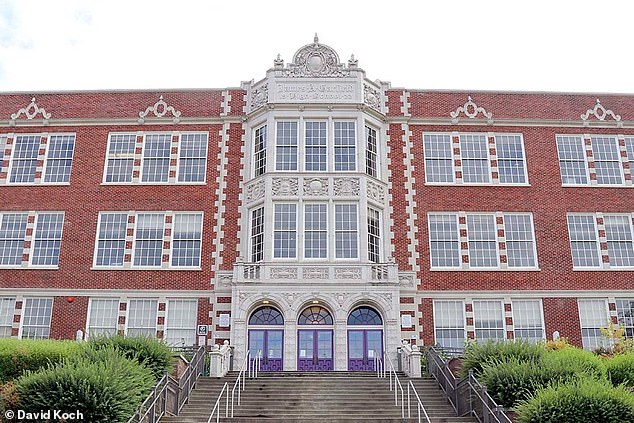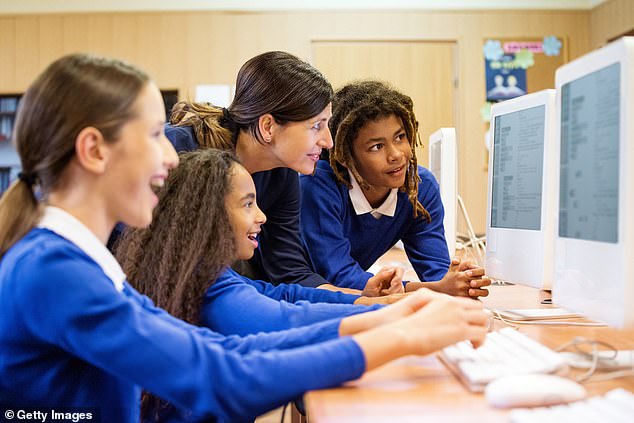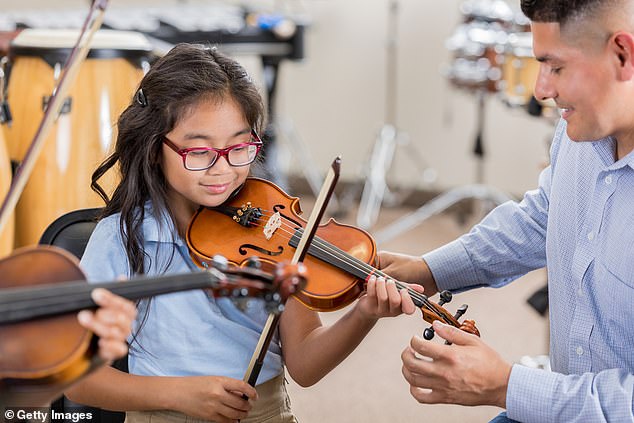Seattle closes gifted and talented schools because they had too many white and Asian students, with consultant branding black parents who complained about move ‘tokenized’
Seattle cut its gifted and talented programs after the school board determined there were too many white and Asian students.
The district began phasing out its High Capable Cohort schools and classrooms for advanced students in the 2021-2022 school year because they felt there was too much racial disparity. School bosses said black and Hispanic students were under-represented at the schools.
According to Seattle Public School data, among highly able students in the 2022-2023 school year, 52 percent were white, 16 percent were Asian and 3.4 percent were Black.
During a school board meeting on January 22, 2020, parents of Black students in the Highly Able Cohort asked the board to find ways to include students of color in the gifted program instead of cutting it out.
Then, school board vice president Chandra Hampson criticized those parents, saying, “This is a pretty masterful job of symbolizing a very small community of color within the existing cohort.”
When the school board decided to end the program, Vice President Chandra Hampson denounced parents of minority students who had asked the board to keep the program “tokenized.”

Garfield High School is among the Seattle public schools that will be forced to shut down their gifted and talented program
“My request is that you please consider the disservice you would be doing to the minorities already in the HCC program,” a father said at the meeting, the local newspaper reported. The stranger.
“The program does more for black children, especially black boys, than it does for their peers.”
Three elementary schools, five middle schools, and three high schools are currently highly capable cohort schools – all of which will be phased out by the 2027-2028 school year.
The gifted and talented program has been replaced by the highly capable neighborhood school model, which requires teachers to devise individualized learning programs for all their students.
According to Seattle Public Schools, the new model will be “more inclusive, equitable and culturally sensitive.”
Parents told The Seattle Times they believe the new model could lead to their children being overlooked, which would slow their academic progress.
Erika Ruberry, a parent of a second-grader at Decatur Elementary, said, “It seems to me that kids who may be at either extreme are not being adequately served.”
Karen Stukovsky, who has three students in the gifted program, said, “You can only do so much differentiation.”
“You have some kids who can barely read and some kids who are reading Harry Potter in first grade or kindergarten. How are you going to not only get those children to the highest level, but also challenge the children who are already far above the level?’
Some teachers said they felt they did not have the time or resources to create curriculum for every student in a classroom of 20 to 30 students.
News station KOMO reported that anonymous teachers said the district is not providing them with additional resources.
“No extra time, no classroom help, no curriculum help, and no extra compensation to come up with these extra lesson plans for each level of learning in one classroom,” the report said.
The school district said in a March 5 update that they are currently facing a $104 million budget deficit.

The district began phasing out High Capable Cohort schools and classrooms in the 2021-2022 school year because they felt there was too much racial disparity (pictured)

According to Seattle Public School data, among highly able students in the 2022-2023 school year, 52 percent were white, 16 percent were Asian and 3.4 percent were Black (file photo shown)
“This occurred because Washington state is facing an education funding shortage and fewer students are enrolled in Seattle Public Schools,” the district said.
However, proponents of the new program believe it will bring students from different backgrounds together and create a more diverse learning environment.
View Ridge Elementary School Principal Rina Geoghagan said, “They bring their home experience and their culture, and that’s really unique. It creates a very rich learning environment.’
‘Will it be perfect? No. But every time something changes, it’s not perfect.”
Darrell Thomas, father of a fourth-grader in west Seattle, said, “I think that’s great, if that meant we could stay here and keep her with her group of friends and the teachers that we have, you know, know her well and love her. and working with her all day long, we will certainly be happy to do that.’
